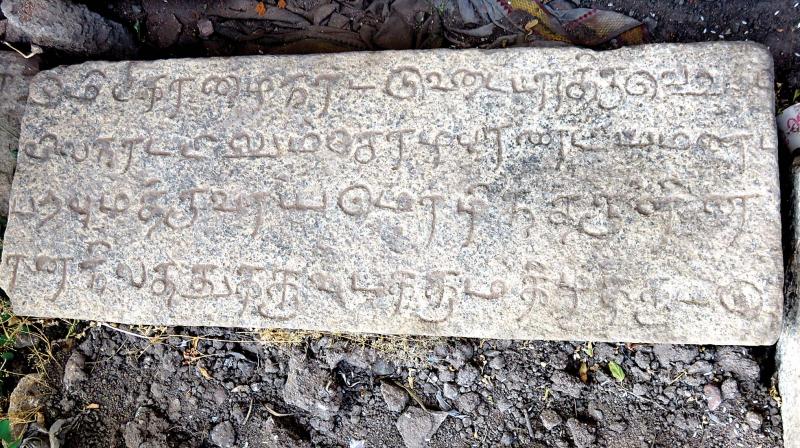Auctioning of temple lands was common in Chola era

Tiruchy: The origins of the mystical ‘Erumbisvarar temple’, dedicated to Lord Shiva at Thiruerumbiyur (Tiruverumbur) near Tiruchy, though dating back to 6th C. E. the present structure belongs to a later period,10th C. E. The credit of converting the shrine into a stone temple goes to Chembiyan Vedivelan, a philanthropist of early Chola period, say history scholars.
This has come to light in explorative studies undertaken by Dr R. Akila, assistant professor, department of History, Arignar Anna Government Arts College, Musiri and Dr M. Nalini, head and associate Professor in History, Seethalakshmi Ramasami College, at the venue where few new records of Chola period were found.
Dr R. Kalaikkovan, director, ‘Dr M. Rajamanikkanar Centre for Historical Research’ informed that earlier studies at the venue by the scholars yielded nine inscriptions of Chola, Pandya and Vijayanagar period and the present study that covered almost all the fragmentary inscriptions scattered all around the outer prakara of the temple improved the understanding of certain older records and provided fresh details about the socio-cultural life of the people who lived here during the Chola rule.
Interesting information has come to light on two Saivite mutts that existed here. During the 30th regnal year of Rajaraja Chola III, nearly 24 ‘velis’ of land was gifted to the mutt, named after Tamil saint Thirunavukkarasar who had sung sacred hymns on this temple. A royal order provided 10 ‘velis’ of tax-free land to the other Saivite mutt na-med after another Tamil saint, Sambandar that existed in the temple quarters.
Another 30th regnal year inscription of Rajaraja III was again a royal order by which certain portion of fertile land was allotted to the ‘Thiruvudai Maruthudai Nayanar temple’ that is still to be seen at Kuttappar, a nearby village. The name of the government official who had written the royal document and the names of the individuals of the revenue department who had passed the order are also available.
An undated Chola record reveals a sad story of the residents of two villages namely Cheppankudi and Kadalankudi who had abandoned their villages due to severe drought. This caused a severe setback in the temple management since the lands of these villages belonged to the temple. The barren lands were sold in auction to compensate the loss. “Such auctions were common and reported in several records of the Chola period.” It is said that the department of epigraphy has been duly informed about the new finds, the historian added.

